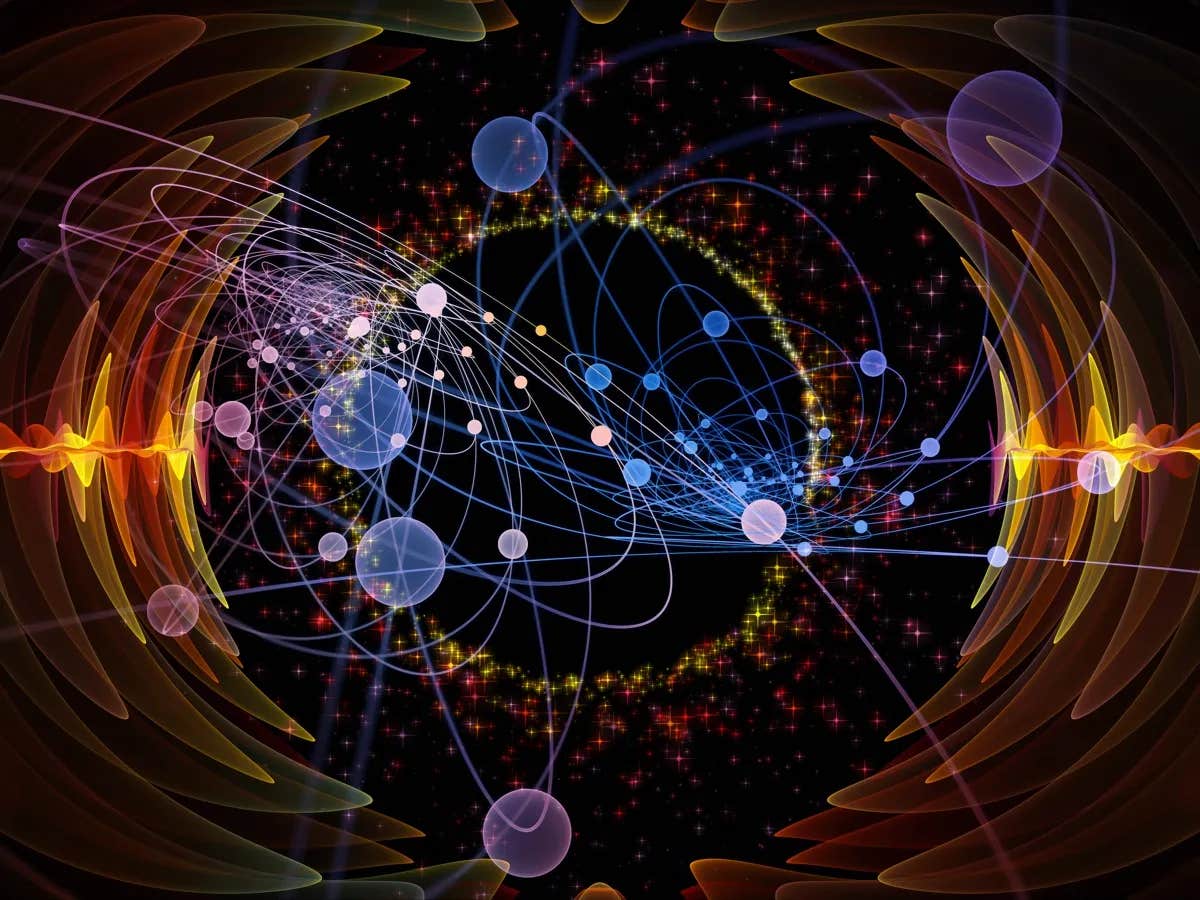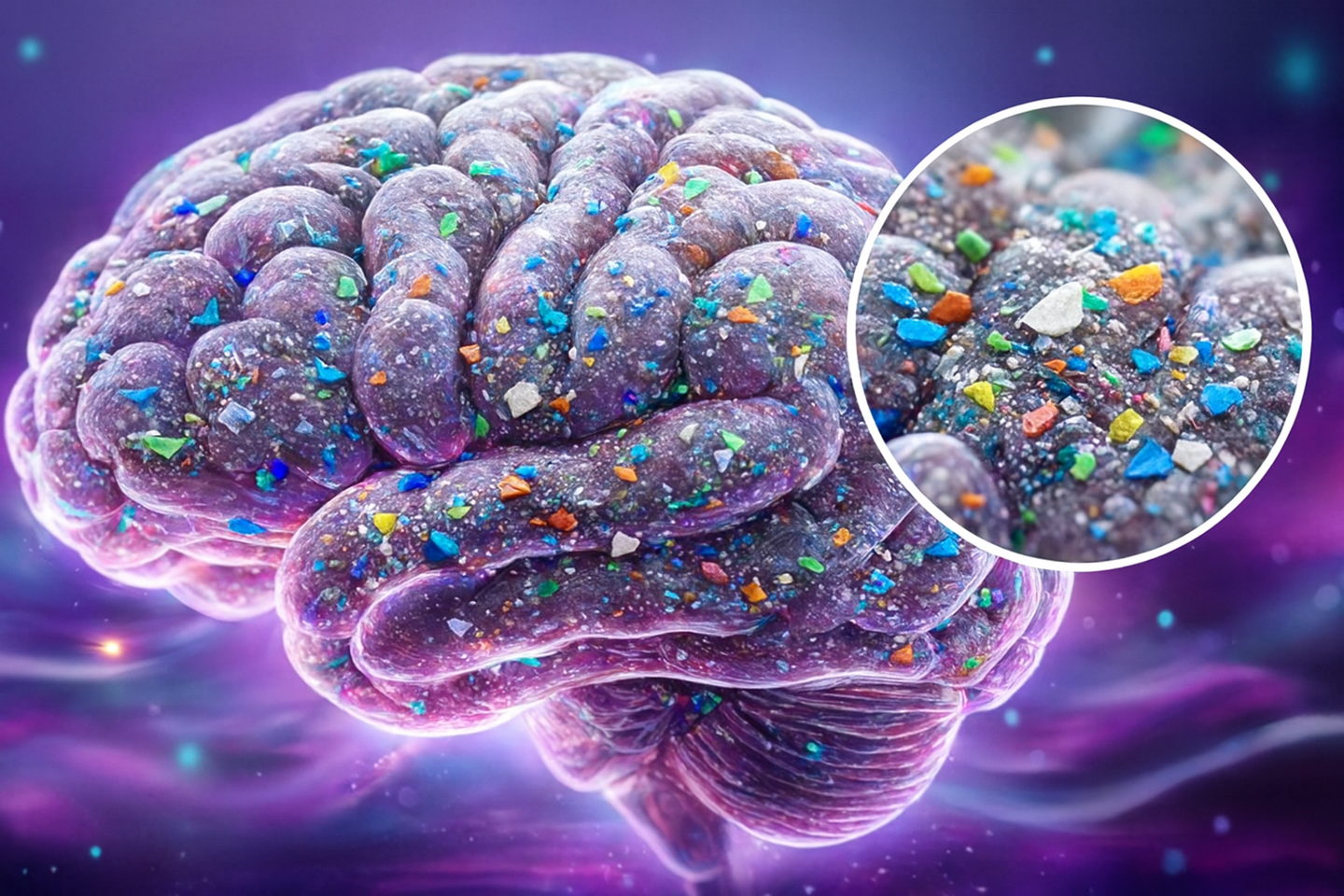Neutrinos may hold the key to solving the universe’s biggest secrets
A landmark study combining U.S. and Japanese experiments has produced the most detailed view yet of neutrinos.

Neutrinos are the ultimate cosmic shapeshifters. They come in three “flavors”—electron, muon, and tau—and can morph from one type to another in a process called oscillation. (CREDIT: Shutterstock)
Physicists have been chasing one of the universe's strangest mysteries—neutrinos, nearly invisible particles that zip through everything, including you, billions of times every second. For the first time in history, two of the world's biggest neutrino experiments—the US NOvA experiment and Japan's T2K experiment—have joined forces to combine their data. Together, they produced the most precise view to date of how neutrinos change "flavor" as they travel across space and time.
Why Neutrinos Matter
Neutrinos are the ultimate cosmic shape-shifters. They come in three "flavors"—electron, muon, and tau—and can switch between them by oscillating. This weird process is not an anomaly, but may be the key to why the universe is made up of mostly matter and not half matter and half antimatter.
“The reason neutrinos are really, really fun is because they change their flavors,” said Zoya Vallari, an assistant professor of physics at The Ohio State University and a leading member of the NOvA collaboration. “Imagine getting chocolate ice cream, walking down the street, and suddenly it turns into mint. Every time it moves, it changes again.”
By studying these oscillations, researchers can explore the universe's most fundamental forces. They can test whether neutrinos violate charge-parity (CP) symmetry—the principle that particles and their antiparticles must be exactly similar. If neutrinos violate CP symmetry, it could provide an explanation for why matter didn't get destroyed by antimatter when the universe was very young after the Big Bang.
Two Experiments, One Big Goal
The NOvA experiment, based at Fermilab just outside Chicago, shoots a beam of muon neutrinos 810 kilometers to a huge detector in Minnesota. And the T2K experiment in Japan shoots its beam 295 kilometers from east to west across Japan from coast to a detector deep in mountains in western Japan.
Both experiments see neutrinos flavor change but each at different beam energies, detectors, and distances. NOvA operates at higher energy, which gives it more sensitivity to the neutrino mass ordering, while T2K's lower energy gives finer insight into how the neutrinos can potentially violate CP symmetry.
While our goals were the same, differences in our experimental design add information when we merge our data together," Vallari said. "The whole is greater than its parts."
What the Data Reveal
By merging datasets, the collaborations established a merged statistical model that merged all detector responses, beam flux predictions, and interaction models. The technique yielded the strongest constraints to date on the parameters that control neutrino oscillations.
The research ascertained that the mass-squared difference between two of the most significant neutrino states—in denoted as Δm²₃₂—is 2.43 (+0.04, –0.03) × 10⁻³ electron volts squared if "normal ordering" occurs, whereby one of the neutrinos is heavier than the others. For "inverted ordering," wherein the lightest neutrino comes last, it is –2.48 (+0.03, –0.04) × 10⁻³ electron volts squared. These are the most precise measurements ever performed using long-baseline experiments.
For the so-called mix angle θ₂₃, which determines to what degree the different neutrino flavors mix with one another, the most favored was 0.56 (±0.05/+0.03 error). This is a modest suggestion of "upper octant" preference, that is, that the muon and tau neutrinos mix more asymmetrically than equally.
Most intriguing of all is what the data have to say about δ₍CP₎, the phase that measures the extent to which the neutrinos and antineutrinos can act differently. If the universe is indeed explained by the inverted mass ordering, then δ₍CP₎ must fall between –0.92π and –0.04π, values that exclude the CP-conserving ones of 0 or π. In short: if the inverted ordering is true, then neutrinos could quite well be CP-violating—giving an exciting hint that they were among the sources of the cosmic tip towards matter.
But so far, the analysis shows no strong statistical lean in either direction toward mass ordering. As Vallari put it, "Our results show that we need more data in order to be able to significantly answer these basic questions. That's why constructing the next generation of experiments is crucial."
What Makes This Breakthrough Different
This is the first time that competing collaborations have come together to present a joint analysis, showing just how high the stakes are for particle physics. "Each collaboration has hundreds of people," said John Beacam, Ohio State professor of astronomy and physics. "That they're co-operating here shows how high the stakes are."
By combining data from detectors operating under different conditions, the study gives a clearer, more confident account of neutrino behavior than can any one experiment. It also demonstrates that scientists can control sloppy "systematic uncertainties" that arise when two major experiments use different apparatus and methods.
As detection times increase and detector capacity increases, such multi-method analyses will be even more accurate. Plans are already in the making for upgrades and second-generation facilities to push the boundaries even farther.
The Road Ahead for Neutrino Research
Future projects such as the Deep Underground Neutrino Experiment (DUNE) in the U.S. and Japan’s Hyper-Kamiokande will soon take over the quest to decode neutrino mysteries. These upcoming experiments will generate even more intense beams propagating further distances and utilize even advanced detectors to identify the rare interactions.
At the same time, Vallari and her colleagues at Ohio State are working to design a new neutrino detector that should be operational by later this decade. "Particle physics has granted us many technologies," she said, "but for me, the strongest motivation is still the human curiosity to know our origin and place in the universe."
Practical Implications of the Research
If scientists are able to confirm that neutrinos do break CP symmetry, it would help solve the mystery of why matter dominates the universe—a mystery at the center of our existence. Understanding the mass ordering of neutrinos will also increase understanding of supernova explosions, cosmic evolution, and the nature of matter.
Beyond cosmology, these experiments drive computer technology, detectors, and analysis of data that often find their way into medicine and energy science.
And on a human level, they demonstrate what’s possible when massive teams across continents unite in pursuit of answers about how everything began.
Research findings are available online in the journal Nature.
Related Stories
- Strange neutrino interactions could change how stars die, study finds
- Physicists record the most precise neutrino mass measurement ever
- Scientists detect the most energetic neutrino ever recorded
Like these kind of feel good stories? Get The Brighter Side of News' newsletter.
Mac Oliveau
Science & Technology Writer
Mac Oliveau is a Los Angeles–based science and technology journalist for The Brighter Side of News, an online publication focused on uplifting, transformative stories from around the globe. Passionate about spotlighting groundbreaking discoveries and innovations, Mac covers a broad spectrum of topics—from medical breakthroughs and artificial intelligence to green tech and archeology. With a talent for making complex science clear and compelling, they connect readers to the advancements shaping a brighter, more hopeful future.



